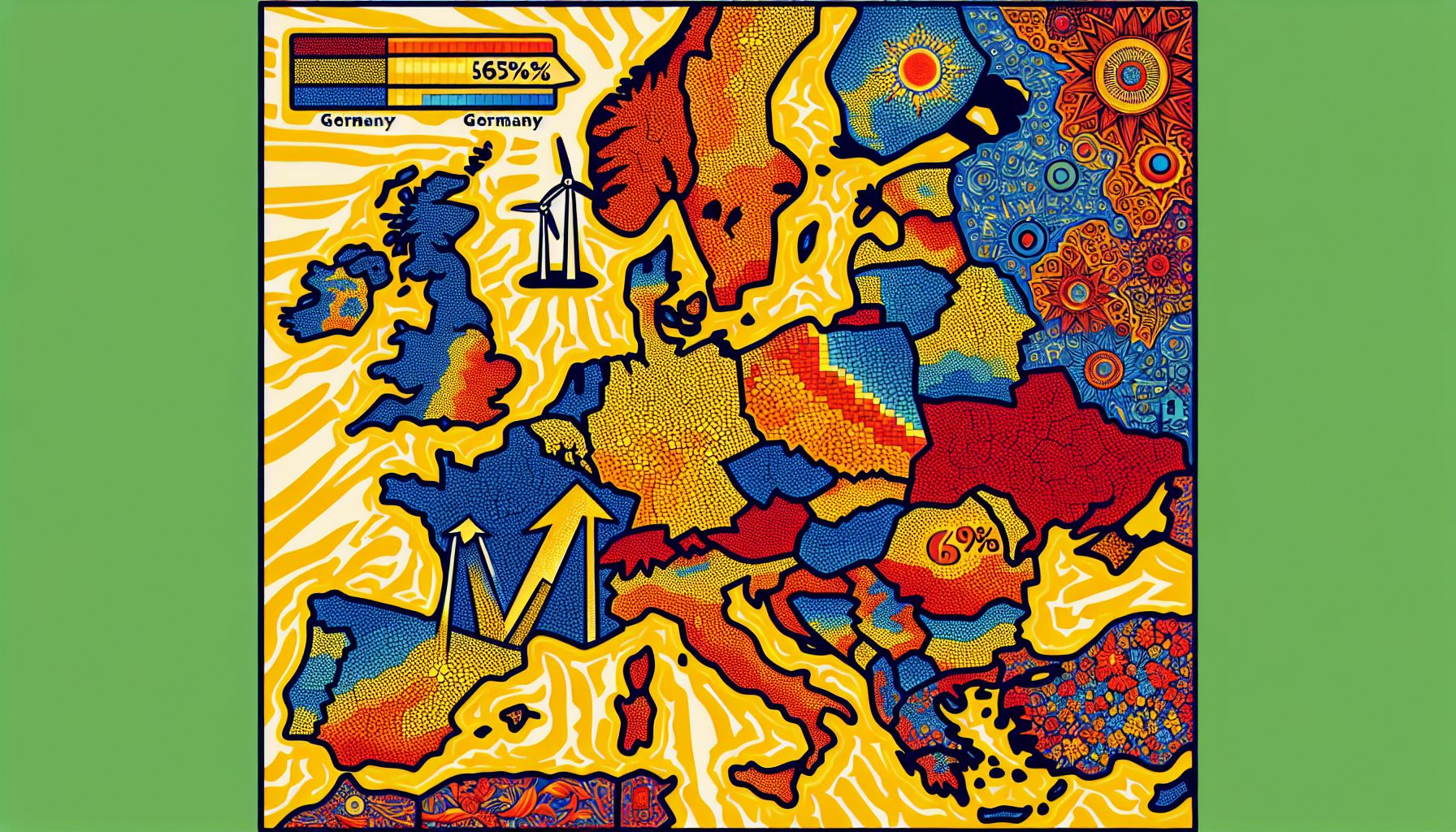EU's Renewable Energy Capacity Grows by 65% in Four Years

A report by Ember highlights a 65% increase in the EU’s wind and solar capacity from 2019 to 2023, with Germany leading the effort.
Germany Leads the Charge
Germany has been the frontrunner in expanding renewable energy within the European Union. As reported by Ember, the country’s significant investments in wind and solar projects have been instrumental in increasing the EU’s renewable energy capacity. Germany’s contribution is followed closely by Spain, demonstrating a strong commitment to the EU’s climate goals.
Solar and Wind Energy Surge
The period from 2019 to 2023 saw the EU’s solar capacity more than double, reaching 257 gigawatts by 2023. Similarly, wind capacity increased by nearly a third, reaching 219 gigawatts. This growth has been a key factor in raising the share of wind and solar energy in the EU’s electricity mix from 17% in 2019 to 27% in 2023[1].
Driving Forces Behind the Growth
Ember’s Sarah Brown attributes the impressive growth to ambitious climate policies and strategic measures aimed at reducing dependency on Russian gas. The European Green Deal, launched by EU Commission President Ursula von der Leyen in 2019, has been a cornerstone of these efforts, setting the goal of achieving climate neutrality by 2050. The REPowerEU plan, introduced in response to geopolitical tensions and the COVID-19 pandemic, further accelerated the transition to clean energy[2].
Public Perception and Economic Impact
A survey conducted by the German Association of Energy and Water Industries (BDEW) in May 2023 revealed that 51% of German households believe the energy transition will position the EU as a leader in energy technologies. However, opinions on the economic impact are mixed, with 36% expecting reduced energy costs due to closer European collaboration, while 31% anticipate rising costs[1].
EU’s Broader Energy Strategy
The EU’s broader energy strategy encompasses not just the expansion of renewable sources but also improvements in energy efficiency and infrastructure integration. The European Green Deal and the Fit for 55 package aim to reduce greenhouse gas emissions by at least 55% by 2030. The introduction of the REPowerEU plan has been pivotal in diversifying energy supplies, promoting energy savings, and securing sustainable energy sources for the future[3].
Looking Ahead
The EU has set ambitious targets for the future, aiming for 42.5% of its energy consumption to come from renewable sources by 2030. Sector-specific targets include 42% for buildings and at least 29% for transport. By pursuing these goals, the EU aims to create a more independent and sustainable energy landscape, reducing its reliance on fossil fuels and imported energy[3].

